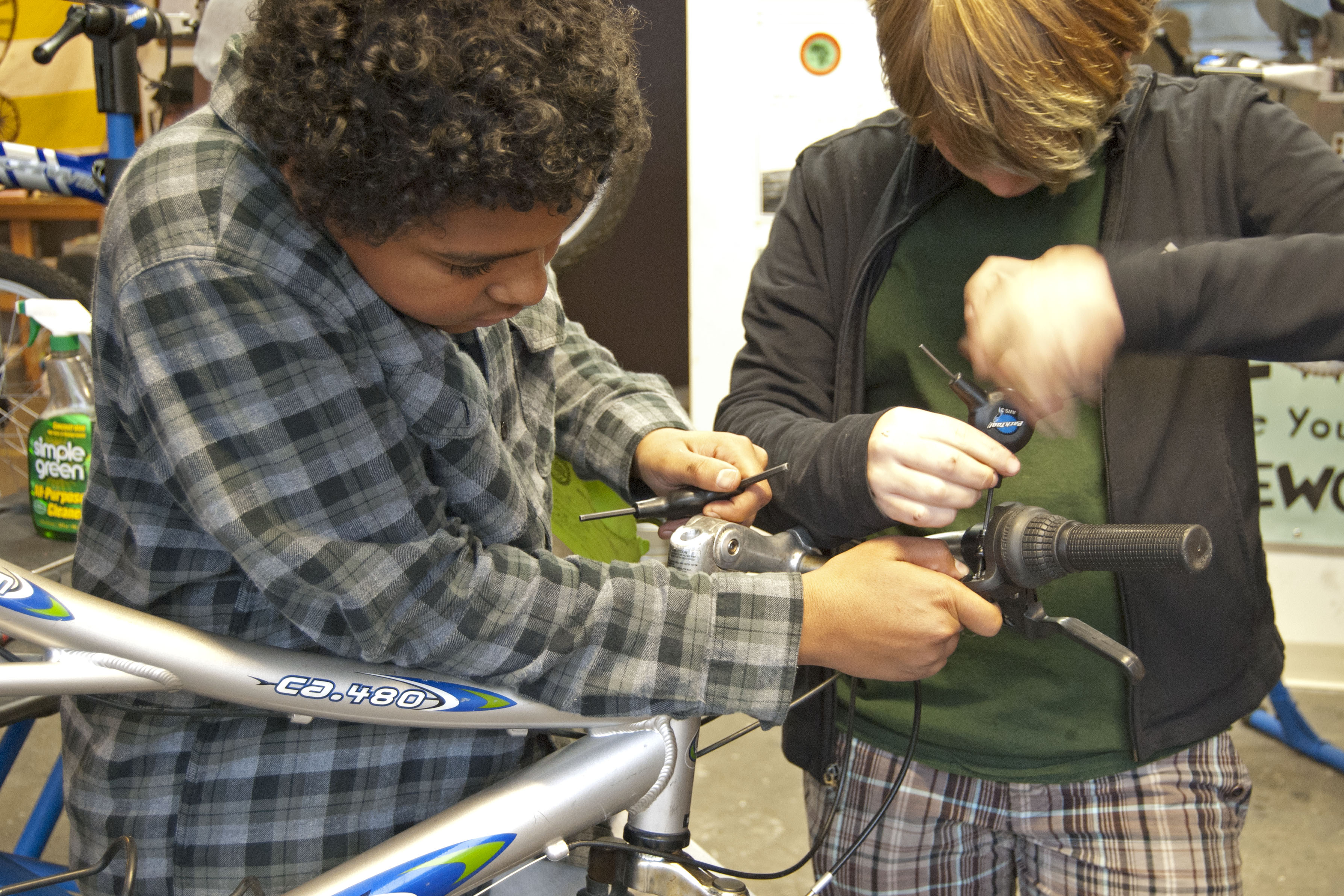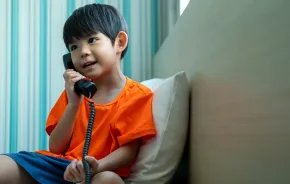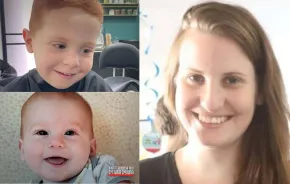

In the scramble to find care and programs for their children, busy and cost-conscious parents do not always have the tools available to assess the quality of that care. Yet new research shows that all programming is not equal, and that the highest quality programming can lead to better outcomes for children and teens.
In this special 9-month series, we explore how new voluntary standards developed in Washington state by School's Out Washington are impacting the quality of after-school programs that serve about 134,000 youths after the school bell rings. Along the way we visit with organizations that are reshaping their programming and measuring success.
We help parents figure out what they should seek in a program, and we look at research on the impacts of quality care on kids’ development and academics. After-School Special’s independently reported content is funded by a journalism grant in partnership with the Raikes Foundation and School’s Out Washington.
Click through the slideshow and thumbnails below to access all the stories in our series.
— Executive Editor Natalie Singer-Velush
After-school special: What Happens to Kids After School Matters, Even More Than We Think
When Rebecca Schneir’s son Eli, started kindergarten last year, he loved his teacher, the classroom and making new friends. It was what went on after school that was bumpy.
For the Schneirs, as for many other working parents, there is a tricky two- to three-hour gap between the end of the school day and the end of the workday. When his parents tried to enroll Eli in the well-regarded after-school program at West Woodland Elementary in Seattle, where he attended school, there was a long waiting list. “That was the first crazy thing, and I’d had no idea,” says Rebecca Schneir. So the Schneirs opted for another program that transported kids to a nearby facility.
At pickup time, Schneir would find her son — normally a social, energetic boy — sitting sullenly on a couch by himself. And there were other red flags.
Cultural Competency: Culturally Authentic and Relevant Programs Foster True Connections
Holy Chea grew up in an area of south Tacoma that was marked by poverty and gang activity. And while there were caring adults in his life, “There was an attitude [around the school environment] of ‘Let’s just get the students through,’” Chea says. After-school programs, while offering safe havens, lacked focus on learning or academics, nor was there an expectation of success in school.
Mentors Make a Difference: Beyond School and Home, Kids Need Guides to Thrive
In a classroom of boys, groups of three gather around their bike stands. Some students experiment with wrenches to figure out which kind will loosen frozen bolts on wheels. Others cooperate to remove rusty chains, an important step to get these not so gently used bikes back into working condition.
Instructor Ricardo Rodriguez, aka “Ricky,” walks around the room, slipping easily between Spanish and English as he offers tips. “Who’s ever heard of ‘lefty loosey, righty tighty’?” Today’s class is “All Boys Earn a Bike”; yesterday’s class was for girls only, and there are also coed options. The boys range from 9 years old to high school age; 70 percent are youths of color.
This after-school program at Bike Works, in Seattle’s Columbia City neighborhood, teaches real-life skills, from rebuilding bicycles to building friendships, from the ground up. “We say the bicycle is a tool of freedom,” explains program director Tina Bechler, “but it leads to conversations about opportunities, how the world is changing, bigger issues.”
How Well Do You Know Your After-school Program? Why Family Connection and Engagement Matters
When 7-year-old Oscar Lopez dressed up as Wolverine for the Halloween Hoopla at the Wallingford branch of the King County Boys and Girls Club, he was doing more than showing off his costume. He was showing off to his mom the place where he plays, learns and develops friendships after school.
For Emma Lopez, who is finishing up her bachelor’s degree at the University of Washington, seeing the parents of her son’s friends made the Halloween event a social time for her as well. “I’m so busy being a mother and a student, I don’t have time to make plans, so it was nice to have people here we could meet up with.”
After-school programs are often regarded as holding places or stand-ins — the place where kids spend time when mom or dad is not available.
But studies show that when families connect with their child’s after-school program, the child’s academics and social and emotional health improve. The organizations benefit, too, which then lifts local communities and schools. Creating a home-program connection can be challenging, but some local programs are doing it.
#LikeAGirl: How Girl Scouts Changed Outcomes for Youth by Equipping Staff For Social-Emotional Support
On a recent weekend, with bare winter trees reflecting on Lake Langlois at Camp River Ranch in Carnation, dozens of middle-school-age Girl Scouts gather inside nearby Helena’s Lodge and do some reflecting of their own. Led by female volunteers, the girls discuss the media and how their own self-images and identities are shaped by media messages.
Gigi Morrison, a mom from Sammamish whose 12-year-old daughter has been in a Girl Scouts of Western Washington troop since kindergarten, kicks off one focus group by playing the powerful Like a Girl video, produced by Always, which, since its release last summer, has gone viral, tallying more than 53 million YouTube views. Then Morrison gently nudges the girls into talking.
“What does doing something 'like a girl' mean to you?”
Game-Changing Programs for Single Parents and Kids
When Nikeya McAdory picks up her 5-year-old daughter, Dylan, from after-school care at Graham Hill Elementary School in South Seattle, she has a chubby-cheeked 1-year-old in her arms and a 9-year-old son in tow. She has come from her full-time job as a dental assistant downtown; this is her third stop before the family heads to its home in Burien for the evening.
When McAdory gets home, there will be no sharing of responsibilities. She is a single mom covering every base on her own. But there is nothing about McAdory, who has a megawatt smile, that says self-pity. Despite the challenges past and present, her focus is looking forward. “I’m working hard to move up and be a dental hygienist,” she says.
The reality, though, is that McAdory needs help to make it all come together for her family.
Lights, Camera, Action! Theater Programs Empower Kids
To the Cotton Club strains of Duke Ellington’s "The Mooche," Megan Adams leads middle schoolers in a jazz routine. Trumpets, clarinets and other instruments breathe life into “zoo animals” — the choreography transforming kids into heavy elephants, hippos and lithe gazelles. “Picture this as you are swinging your hips or moving your arms: What are the animals doing after the zookeeper goes home?” asks the Village Theatre instructor, challenging the kids to imagine as they practice chassé and pas de bourrée steps in sequence.
Elevating Art, Elevating Youth: Success at Seattle Art Museum
In a brightly colored exhibit hall, visitors toSeattle Art Museum’s “Indigenous Beauty” exhibition see striking works of native art. Spanning a period of 2,000 years, items include intricately beaded children’s clothing, woven Tlingit baskets and carved, colorful katsina dolls that depict spiritual beings in Hopi and Zuni cultures.
On a recent afternoon, about two dozen teenagers embark on their first tour of the exhibit. Their curiosity in the native pieces is genuine, but it’s also mission-driven: On May 8, this group of teen arts ambassadors will throw a Teen Night Out party at Seattle Art Museum (SAM) for hundreds of their peers in hopes of sparking an interest in art. These teen leaders will be docents for the evening, plan the food and drinks, organize and lead activities, such as papier-mâché mask making, and even line up top local DJs and live musical performers.
Teeing Up Summer Care: How to Pick a High Quality Program
Here in the Pacific Northwest, it’s felt like spring since January; ski gear has gathered dust, and heavy coats have stayed in the closet. So we parents can be forgiven for being a little discombobulated. Summer (real summer, as in that time of year when kids are not in school during the day) is right around the corner, and frankly, some of us feel caught off guard.
The fact is we need to find summer care for our kids. And not just any care; we want good-quality care. As we have reported in this multipart series, that means programs that engage children in meaningful activities that they can reflect upon afterward; that are culturally responsive; and that offer opportunities for youth leadership.
“With any program or camp, the cost you’re paying for is generally the cost of staff, so watch out for low-priced programs," warns Brian Pitt, a recreation specialist for Metro Parks Tacoma’s Sparx program. "Because you have to ask, ‘What are they cutting?’”
Parents' Quick-Check Graphic:





















